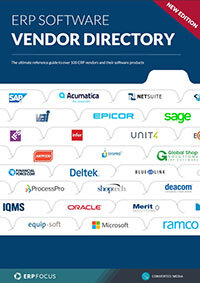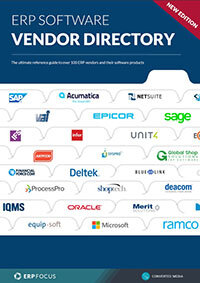Six useful integrations your new ERP system should support
Many ERP systems try to offer modules that are not strictly ERP but are commonly used alongside it. Those ERP providers want to incentivize their customers to spend more and, often, it makes sense to use the same database anyway. For example, CRM is common these days as an ERP module as it used the same list of customers and links nicely to sales orders. Let’s look at a few more ERP integrations that are useful.
1. E-commerce
Much of today’s business begins on the internet where a customer places an order on a website. Sometimes the web store software can complete the order fulfillment, but rarely does it consider accounting and production. ERP is king in these domains. Typically, an order is placed using web software and the demand needs to pass to ERP for fulfillment from inventory or even to production job. This ERP integration seems natural but isn’t widely available.
2. Automated Clearing House
ACH is a widely used network for processing payments in the United States. Similar systems exist in other nations. A payment could be from a customer using a credit or debit card. A business could choose to pay suppliers through the network instead of using a check. A supplier could also process a draft on their customer’s bank account if both parties agree to those terms. When linked to ERP, the payment is immediately recorded and there is no interim status in accounts receivable.
3. Financial closing engines
Accountants have used checklists for years to ensure periodic closings are completed accurately and on time. A financial close engine might be cloud software that goes beyond the checklist enabling accountants at many locations to integrate their work, often using different ERP systems, and produce a complex multi-national close in today’s world.
4. Shipping software
You fulfill an order using your ERP. The next step is delivery which could be through a parcel carrier, LTL or FTL truck carriers, air or sea carriers of combinations of all these. An shipping-integrated ERP would pass the ship-to address and weight to the carrier. The carrier software then passes a tracking number back to ERP where it is shown on a customer invoice and is available to customer service to answer questions that arise. Integrating these systems might make more sense than cutting and pasting data across the systems at the time of shipment.
5. PDM and PLM systems
Manufacturers and others use product data management and product lifecycle management to control many aspects of their products. Those systems help manage bills of material and revise levels of products and components of products. These modules do exist in some ERP systems, but manufacturers might prefer to use another system because it has features they need or simply because they already used the standalone software before it was an ERP option.
6. Workflow engines
Often ERP systems do have workflow capabilities built in. These are often buried deep in the system setup and require sophisticated software development. Third-party engines might be much more user-friendly and so a user would prefer a tool ready to use compared to one where they need to rely on their IT group for help.
Free white paper

ERP Software Vendor Directory
Put the most comprehensive ERP vendor directory on your desk today

Related articles
-

Nine signs you need an eCommerce ERP integration
A guest blog from Brightpearl discussing eCommerce ERP and integration
-

Secret KPI: Why Your ERP Implementation Team Matters More Than Software
Learn how Godlan ensures successful ERP implementation for manufacturers with proven strategies &...
-

Top 10 ERP selection criteria (including checklist)
The most important ERP selection criteria you should keep in mind during your selection process.

